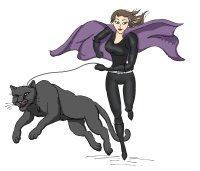 Food, Sports, Energy, and Protein bars
Food, Sports, Energy, and Protein bars* Notes
- There are too many food, sports, energy, and protein bars (alias “food bars”) to list here or analyze, and not all of them are created equal. Some are healthier than others, using real ingredients, while others are just glorified candy bars.
- Food bars (including granola bars) are only marginally better for you than candy bars or fast food burgers.
- Most food bars are high in calories, contain sugar (or high fructose corn syrup), wheat and other flour, fat and fat sources (like hydrogenated oil), salt, milk products, nuts, cocoa and cocoa powder, caffeine and other stimulants, ginseng, and additives and preservatives.
- Some food bars add vitamins and minerals to increase their value.
- Some food bars contain fiber and some are gluten-free.
- MY DIVA DIET does not recommend food, sports, energy, or protein bars as part of your daily diet—we remind you that you need to get your calories from natural, fresh, and wholesome foods.
- It’s okay in an emergency situation to have one of these food bars. Try to choose those with fewer ingredients, higher protein and fiber, and no sugars and low to no flavor enhancers, additives, and preservatives. Again—read the labels!




























